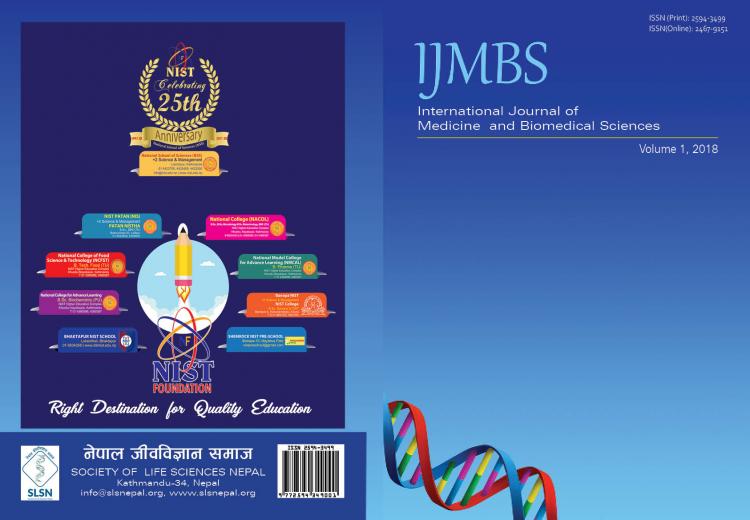Epidemiological study of Intestinal Parasitosis in rural area of Nepal.
DOI:
https://doi.org/10.55530/ijmbiosnepal.v2i2.26Keywords:
Intestinal parasitosis, Myagdi, fecalAbstract
Intestinal parasitosis is one of the major public health and socio-economic problems in Nepal. It is ranked among the top
10 morbidities in Nepal. Fecal samples were collected from the patients attending to different hospitals and private
laboratories throughout the Myagdi district. A total of 985 participants were included in the study. The age ranged from 1
to 86 years. Commonly affected age group was of below 15 years. Male to female ratio was 1.3:1. The general prevalence of infection with different types of intestinal parasites was 14.7% (145). The fecal examination revealed different types of helminths (7.2%) and protozoan (7.5%). Giardia lamblia was the most common parasite (5.5%), followed by Entamoeba histolytica 2.0%, Ascaris lumbricoides 4.0%, Hookworm 1.8%, Trichuris trichiura 0.8%, Hymenolepis nana 0.4% and Taenia spp 0.2%. Multiple parasites were observed in 11 samples. Higher prevalence rates of parasitic infections were seen among children.
Downloads
Published
How to Cite
Issue
Section
License
Copyright (c) 2017 International Journal of Medicine and Biomedical SciencesIJMBioS follows the following Terms and License of the manuscript under Attribution-NonCommercial 4.0 International (CC BY-NC 4.0) where Author and Journal are can Share — copy and redistribute the material in any medium or format and Adapt — remix, transform, and build upon the material, and it is Non-Commercial.





